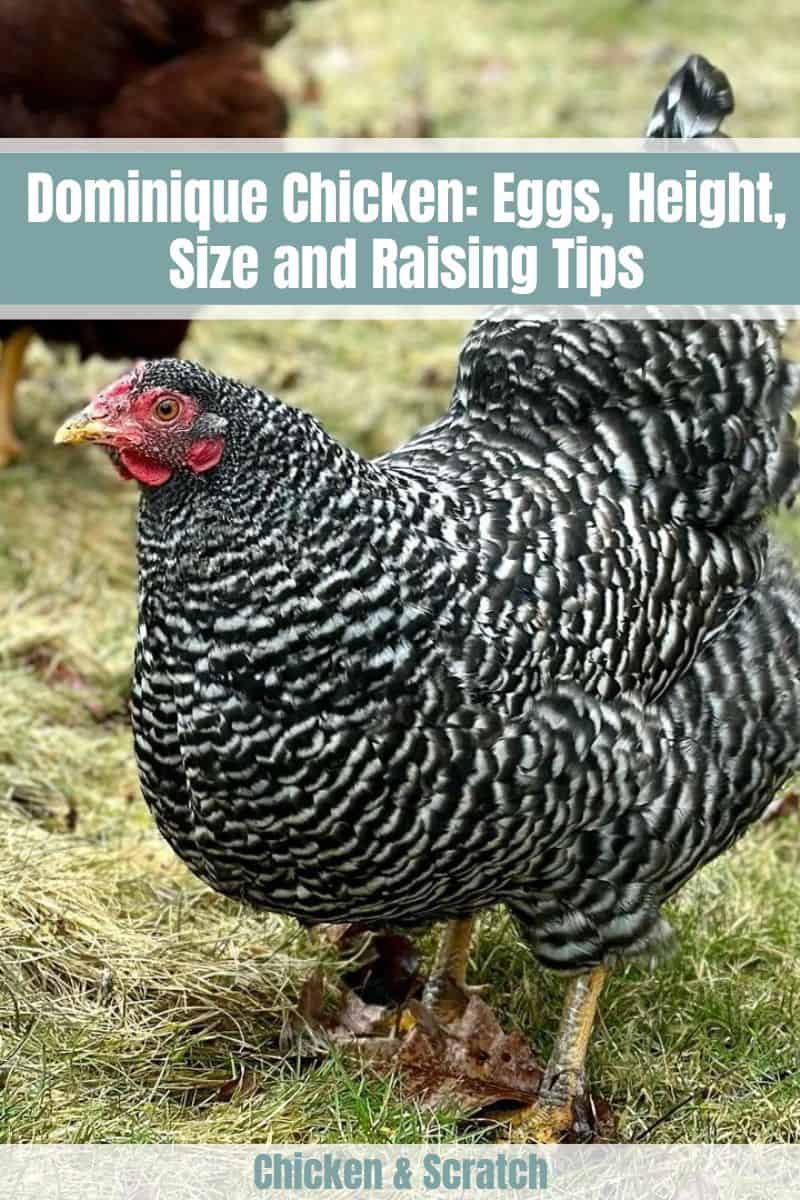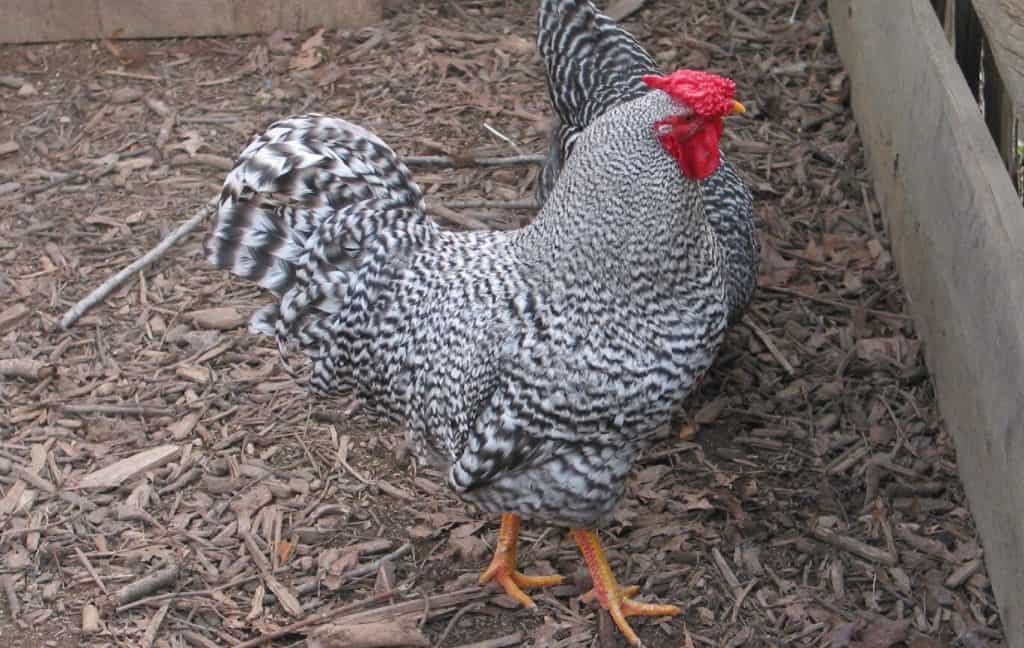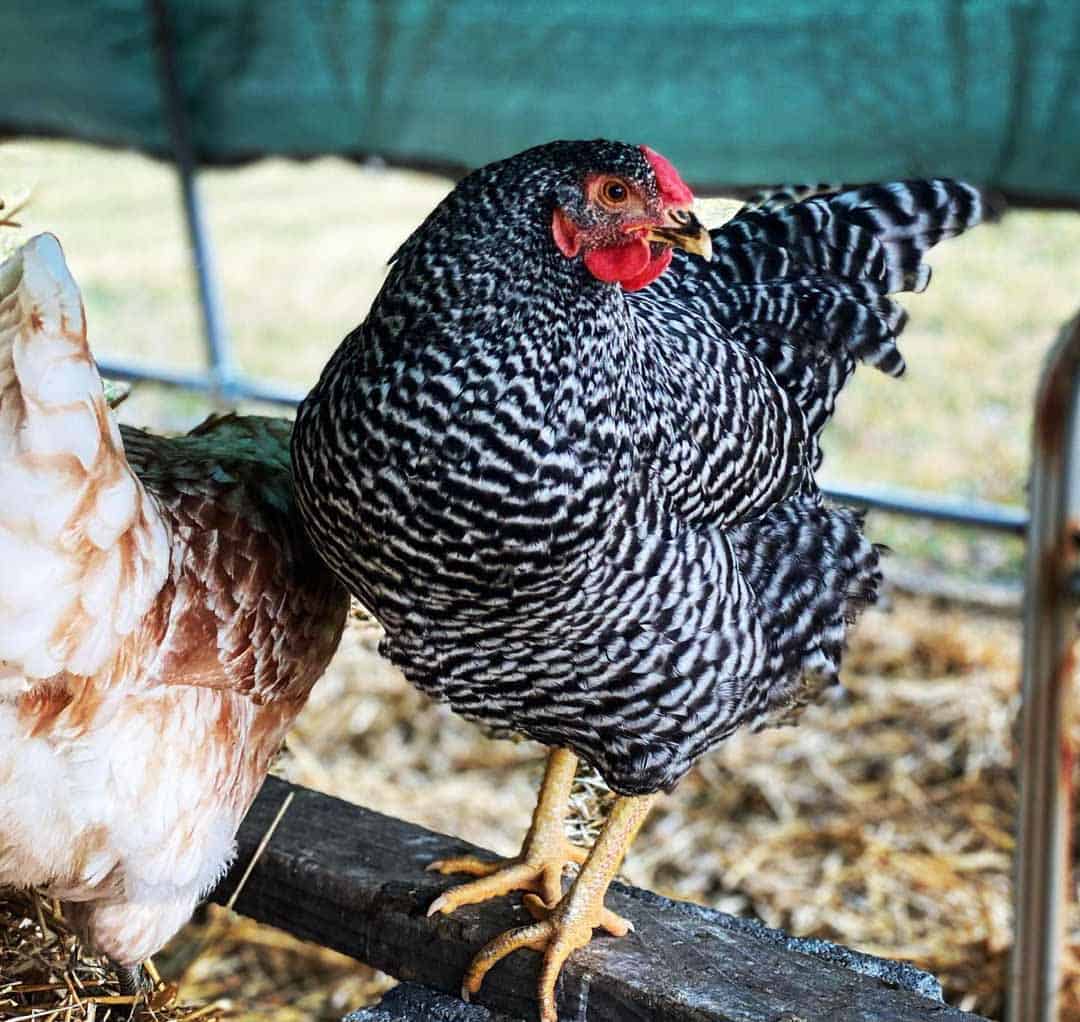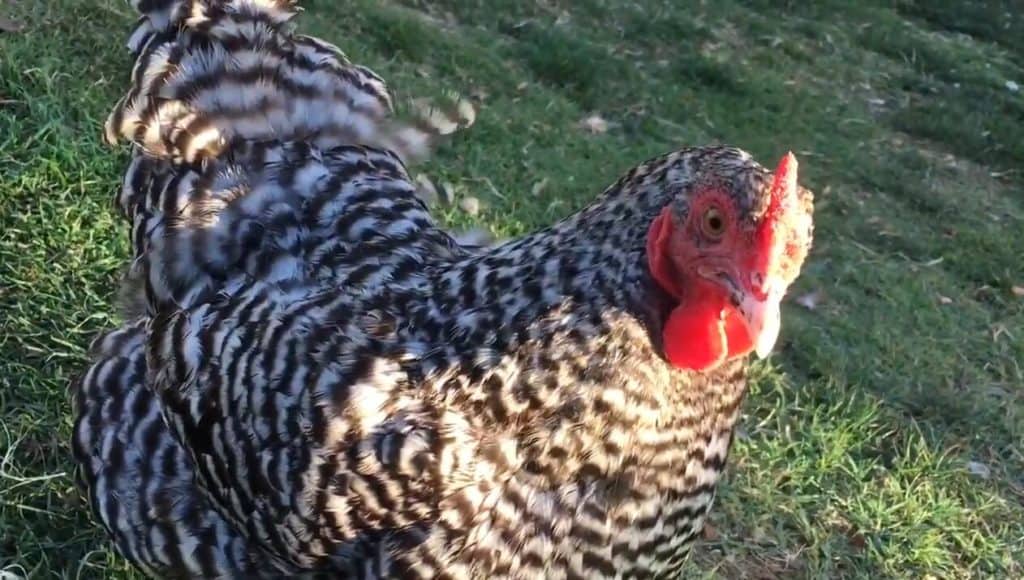Known as one of the oldest chicken breeds in existence, the Dominique breed has been around since the first wave of colonization. Along with having a beautiful look, this breed can be used for several different purposes.

In this article, we’re going to talk about everything you need to know, including the actual history of how these chickens came to be.
History of Dominique Chickens
The background and history of the Dominique chicken can be a little muddy. While we know that they are one of the oldest breeds around, it’s not entirely known how they came to America.
Some say they were brought by the Pilgrims, which would explain what they used to be known as Pilgrim fowl. Others say they originated from Saint Dominque, which was a French colony but is now commonly known as Haiti.
This story is where the current name comes from. Besides being known as Dominique and Pilgrim fowl, they’ve also been known as Dominicker, Blue spotted hen and Old grey hen.
It’ll probably never be known where the breed actually came from, but we do know they’ve been around since at least the 1750s. Back then, the Dominique was something that really help people survive.

Not only was it extremely hardy, but it foraged in order to stay alive. This means that they fed themselves and finding extra food for them was one less thing settlers had to worry about. Some of the things settlers used them for are: eggs, meat and used their feathers to stuff pillows.
During the entire time, this breed has been around, there have been times when they were absolutely booming, while other times they faced almost becoming extinct. In fact, the first time they almost became extinct was when they made it through the Great Depression and World War 1.
They also had a rough time when the poultry industry moved to be industrialized and mechanical. Along with many other breeds, the Dominique was decided to not be productive enough for the industrialized industry.
As of now, the classification for this breed is watched and the popularity is starting to increase for small farms and personal homesteads.
Dominique Chicken Breed Standard

When looking at the appearance of a Dominique chicken, it can easily be confused with a Barred Rock. While they both look extremely similar, they can be told apart by a few things. The biggest thing that is different is the comb.
Barred Rock chickens have a single comb that stands upright, while the Dominique has something called a rose comb, which is a flattened and cushioned comb. This rose comb is very useful in colder climates because it’s not affected by frostbite.
If it’s a true rose comb, it will have a spike at the very back of the comb that faces slightly backward. They also have a specific barring, which is a staggered or cuckoo pattern. The black and white contrast isn’t as obvious.
The black is more of a slate color, while the white is more off-white. The comb, wattles, and earlobes are all red, while the beak is yellow and the eyes are reddish bay.
Up until 1870, there wasn’t a specific breed standard put into place. As a result, the majority of people weren’t sure what actually made a good specimen of the breed.
In the 1870s, the New York Poultry Society said that a true Dominique needed to have a rose comb and birds without one were Barred Rocks. Since this caused a lot of anger, the decision was thrown out. Finally, in 1914, they came up with a standard that everyone was happy with.
Personality and Temperament
Before deciding to get a Dominique chicken, it’s important to know the personality and temperament. The great thing about this breed is that they are quite calm and gentle. For the most part, they are also extremely loving and great companion chickens.
They are great at foraging for their own food and they do very well in conditions that allow them to be free-range for the majority of the time.
With that said, though, they can also do well in conditions where they have to be kept in an enclosure, such as times of cold weather or when predators are out in high amounts.
Another great thing about this breed is that they are extremely hardy and do fantastic in bad weather. Not only do they have a high chance of survival, but the combs on their heads are resistant to frostbite.
During mating season, the roosters tend to be a bit aggressive, but they usually do not show this aggression towards their keepers. Most of the time, they’ll follow you around and gather at your feet for treats and love. With this being the case, you want to make sure you don’t step on them or accidentally fall over them.
Dominique Chicken Egg Laying
When looking at egg laying abilities, Dominique does a fantastic job. They lay medium-sized brown eggs and usually lay between 230-270 eggs per year. This will equal around 4 eggs per week.
If you have multiple chickens of the breed, you can get quite a few eggs per week. While it’s not common and usually only happens occasionally, the hens of the breed can become broody.

If they do happen to have chicks, they’re known to be very attentive and fantastic mothers. As a result, they do a great job of raising and protecting their brood.
Keep in mind, there are a few situations where hens will slow down with production. The first is when it gets too cold. During these climates, they tend to try and just stay warm and egg production will slow way down.
The other big reason is when the chickens aren’t being fed the right food. There are foods out there that are made specifically to help increase egg production. While it’s not essential, it can really help increase the amount of eggs that you get.
Health Issues and Care

In the way of health issues and care, this breed doesn’t have too many negatives. In fact, there aren’t any health issues that are specifically known to happen with the breed. They can deal with normal diseases that all chickens deal with, though. Some of these are worms, parasites, mites and lice.
Most of these things are relatively easy to diagnose and get rid of, but there are a few things that will need veterinary care. Since these things can be relatively hard to diagnose, it’s important to get medical attention if you notice anything that isn’t normal for your birds.
There also aren’t any specific care instructions that you need to follow. Some breeds will require you to do certain things to help ensure their survival, but Dominique is a hardy bird. They do fine in colder weather and they also do a good job at foraging for their own food.
In order to make sure your chickens survive, you want to make sure you take care of them like you would any other breed. They are relatively easy animals to care for and you shouldn’t run into too many issues or unusual situations.
4 Tips for Raising Dominique Chickens

Before you decide to get these chickens, you want to make sure you know what you’re doing. There are some things you need to do to ensure their survival and not doing them could mean they don’t survive.
The good news is these things are quite easy to do and you shouldn’t have any issues when it comes to their care. With that said, here are 4 things you should do to ensure you’re raising your chickens right.
- The first thing you want to think about is their coop or enclosure. While they do fine in enclosures, they are birds that love being free-range. Even with that being the case, they should have somewhere safe to go when need be. You could have both of best worlds by having an enclosed coop and adding a run that has plenty of space.
- You’ll also want to think about feeding. Since you’ll probably have multiple chickens, it’s extremely important to make sure you have plenty of food for everyone to get their fill. Most chickens need to have access to feed throughout the day, so you want to ensure none of them are going without. You should also make sure you’re feeding them the type of feed that’s made for their age.
- It’s extremely important that your chickens have constant access to fresh and clean water. This can be a little difficult because chickens are known to dirty their water pretty quickly. This means you’ll have to change the water a few times during the day. To help minimize the amount of times you need to change it, you can put the water bucket a little higher up.
- The final thing you’ll want to do is make sure you have efficient heating for your birds. The 2 main ways to do this is a heat lamp and some kind of insulation. For the heat lamp, you want it to be in a spot that they can easily move out of if they get overheated. You’ll also want to ensure it won’t catch the coop on fire. For the insulation, hay does a great job. You can fill the coop and it should last a few months. You might have to refill it every so often, but you shouldn’t have to do a full change very often.
Summary
After reading all of these things, you should have a much better understanding of the bird. You should also be able to make a decision on whether or not you want to add this breed to your flock.
As long as you care for them properly and do everything you’re supposed to, the Dominique chicken can be a fantastic addition to your backyard.

Joseph Hudson has been raising chickens for over 15 years. In 2018, he completed the Agriculture & Natural Resources program at Mt. San Antonio College. He currently raises over 1400 chickens on his 7.5-hectare farm. He keeps sharing his experience on raising healthy and happy chickens on Chicken Scratch The Foundry.








I have read several articles regarding the Dominique and none can agree on heating. Some say do and others say don’t. So if it requires heating how did they do it 300 years ago?